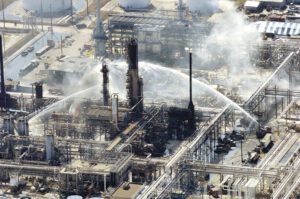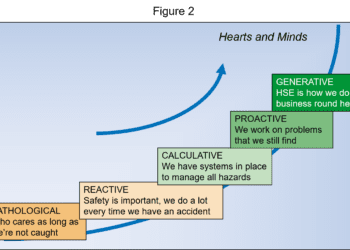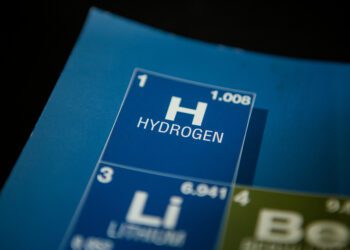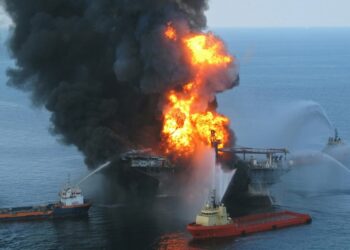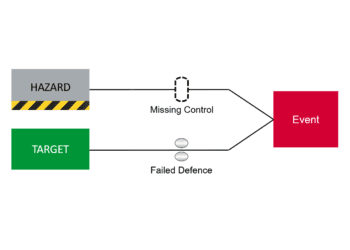Texas City refinery explosion: findings from the independent safety review panel
On March 23, 2005, the BP Texas City refinery experienced one of the most serious U.S. workplace disasters of the past two decades, resulting in 15 deaths, more than 170 injuries, and significant economic losses. During the startup of an isomerisation unit, the associated raffinate splitter tower was overfilled and overheated. A substantial volume of hydrocarbon liquid and vapour were forced into an adjacent blowdown stack, rapidly exceeding its capacity. Ignition of the resulting vapour cloud caused an explosion that extended to nearby temporary trailers.
Aftermath of the Texas City refinery explosion, 23rd March 2005
On October 24, 2005, following the accident investigation, BP announced the formation of the BP U.S. Refineries Independent Safety Review Panel chaired by Former Secretary of State, James A. Baker, III. The Panel was charged with making recommendations to improve BP’s corporate safety culture, corporate oversight of process safety, and process safety management systems.
THE PANEL’S RECOMMENDATIONS
The resulting report, published in January 2007, provides a number of key recommendations:
SAFETY LEADERSHIP
The Board and other members of management must provide effective leadership and establish appropriate goals for process safety, both with the policies they adopt and the actions they take.
SAFETY MANAGEMENT SYSTEM
An integrated and comprehensive process safety management system should be established and implemented that systematically and continuously identifies, reduces and manages process safety risks.
SAFETY KNOWLEDGE & EXPERTISE
A system should be developed and implemented to ensure that its executive management, its refining line management above the refinery level, and all refining personnel (including managers, supervisors, workers, and contractors) possess an appropriate level of process safety knowledge and expertise.
SAFETY CULTURE
Relevant stakeholders should be involved in developing a positive, trusting and open process safety culture within each U.S. refinery.
EXPECTATIONS & ACCOUNTABILITY
Expectations should be clearly defined and accountability strengthened for process safety performance at all levels in executive management and in the refining managerial and supervisory reporting line.
SUPPORT FOR LINE MANAGEMENT
More effective and better coordinated process safety support should be provided for the refining line organisation.
SAFETY PERFORMANCE INDICATORS
An integrated set of leading and lagging performance indicators should be developed, implemented, maintained and periodically updated for more effective monitoring of process safety performance by the refining line management, executive management, and Board of Directors.
SAFETY AUDITING
An effective system to audit process safety performance should be established and implemented. Beyond compliance, audits should ensure that management systems are delivering the desired safety performance or a site’s performance should be assessed against industry best practices.
BOARD MONITORING
The Board should monitor the implementation of the recommendations of the Panel (including the related commentary) and the ongoing process safety performance. The Board should, for a period of at least five calendar years, engage an independent monitor to report annually to the Board on the progress in implementing the Panel’s recommendations (including the related commentary). The Board should also report publicly on the progress of such implementation and on the ongoing process safety performance.
LESSONS LEARNED
Lessons learned from the Texas City tragedy and from the Panel’s report should be used to transform the company into a recognised industry leader in process safety management.
OVERALL CONCLUSION
The Panel concluded that all companies in the refining, chemical and other process industries should give serious consideration to its recommendations and related commentary.
For further information, refer to ‘The Report of the BP U.S. Refineries Independent Safety Review Panel’, January 2007.
This article first appeared in RISKworld Issue 11.

